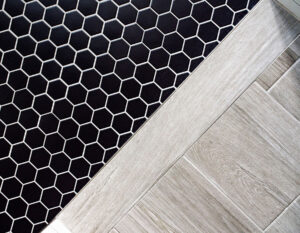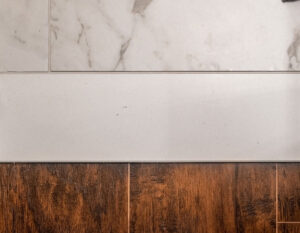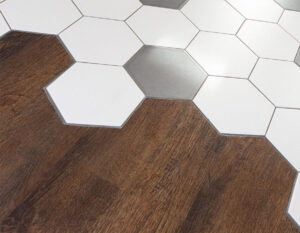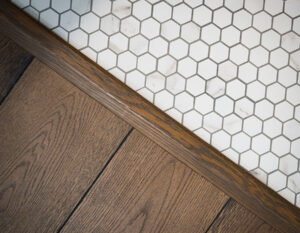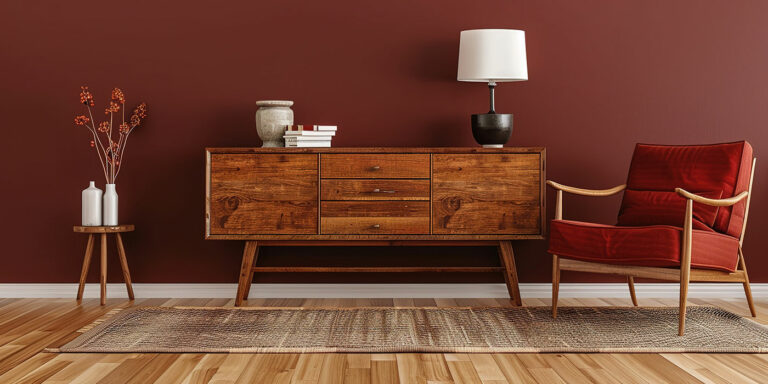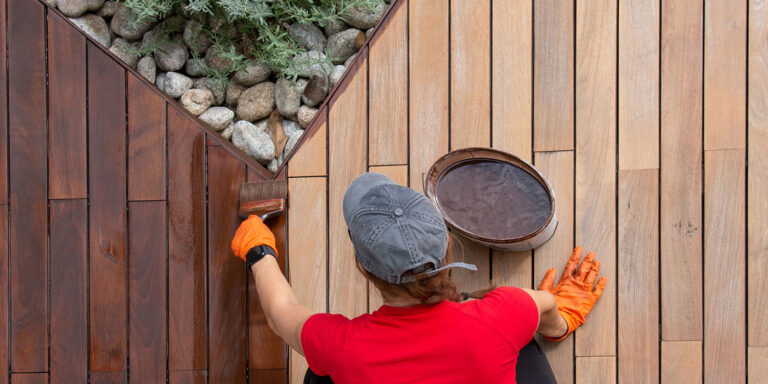Transitioning from wood flooring to tile flooring where the two floors meet, usually in doorways, is something that should be part of your flooring project planning.
Transition strips allow a smooth traffic flow and act as a visual break between two different flooring materials. Commonly used are manufactured transition strips that are made from PVC, metal or wood and are available in a wide variety of colours. They can hide gaps between the two floors and can bridge any change in floor height.
There are also other less common ways to transition from wood to tile when there is no height difference in flooring materials. A classic look is installing a plank of wood flooring material perpendicular to the wood flooring direction inside a doorway and have the ceramic tile butt up against it. Alternatively, you can install ceramic tile perpendicular to the tile pattern inside the doorway and have the wood flooring butt up against it.
Another option is to design your floor as a transitional floor. This is a floor made from wood and tile that spills into each other. This technique is used in the same room to create zones and not typically in doorways. There is a lot more planning and labour involved in this type of floor and it’s a good idea to dry lay the tiles first so you can see exactly the pattern they make. If your flooring and tile have different heights, this should be taken into consideration at the planning stage. Hexagon tiles work well for this technique and should be cemented first, then cut the wood flooring to fit around.
For expert advice and assistance with your wood-to-tile flooring transition, visit your local TIMBER MART today. Whether you’re planning a simple doorway transition or a more intricate design, we can help guide you through the process with the right materials and tools to achieve a seamless and stylish result.

